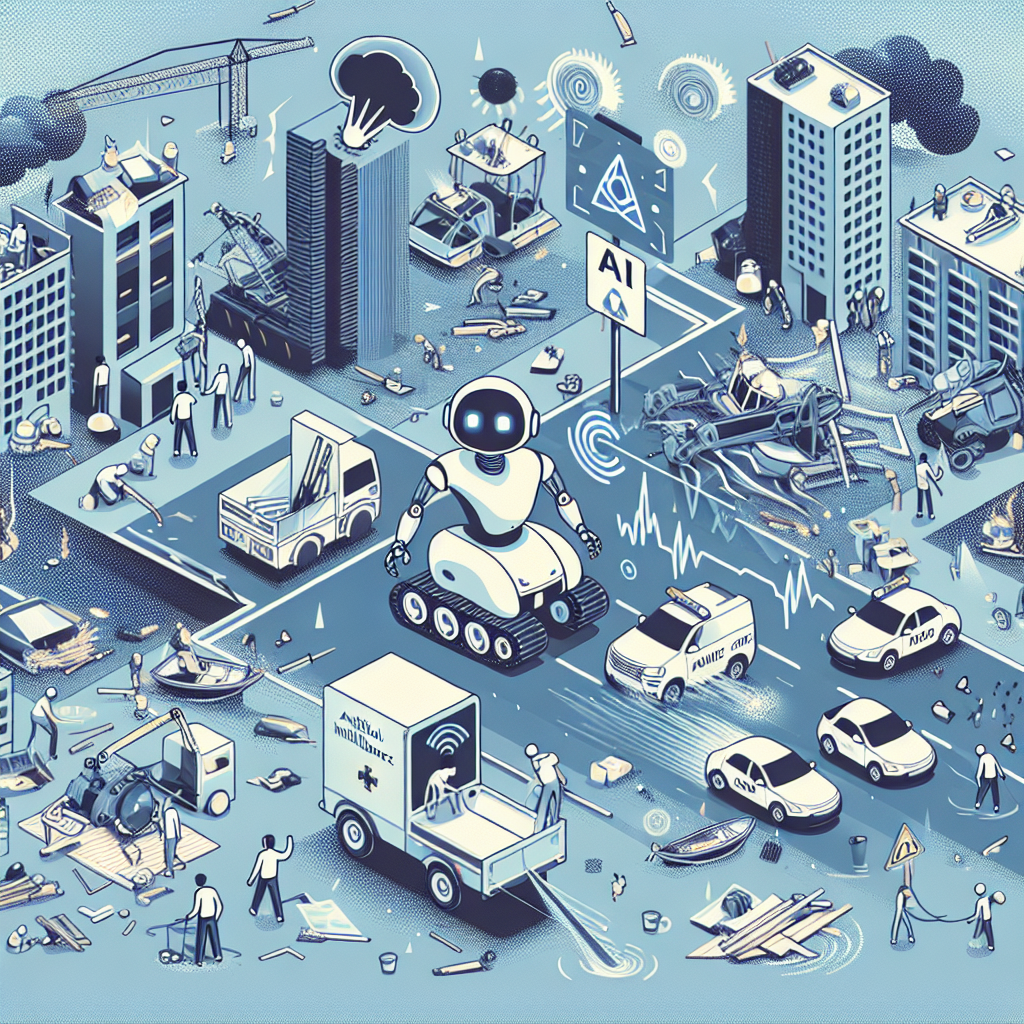Disasters, both natural and man-made, have the potential to cause significant damage to communities, infrastructure, and the environment. In recent years, the frequency and intensity of disasters have been on the rise, posing a growing threat to societies around the world. In the face of these challenges, the role of artificial intelligence (AI) in disaster recovery and resilience has become increasingly important.
AI-driven solutions have the potential to revolutionize the way we prepare for, respond to, and recover from disasters. By harnessing the power of data analytics, machine learning, and predictive modeling, AI can help emergency responders and policymakers make more informed decisions, allocate resources more effectively, and reduce the impact of disasters on communities.
One of the key advantages of AI-driven solutions in disaster recovery and resilience is their ability to process and analyze vast amounts of data in real-time. This can help emergency responders quickly assess the scope and severity of a disaster, identify areas of high risk, and prioritize response efforts. For example, AI algorithms can analyze satellite imagery to assess damage to infrastructure, track the movement of wildfires, or predict the path of a hurricane.
In addition to real-time data analysis, AI can also help improve disaster preparedness by identifying vulnerabilities in infrastructure, predicting the likelihood of future disasters, and simulating various scenarios to test response strategies. By using AI-driven simulations, emergency planners can better understand the potential impacts of different disaster scenarios and develop more effective response plans.
Furthermore, AI-driven solutions can also enhance post-disaster recovery efforts by streamlining damage assessment, coordinating relief efforts, and facilitating communication and coordination among different agencies and organizations. For example, AI-powered chatbots can help streamline the process of connecting disaster survivors with resources and assistance, while predictive analytics can help identify areas of need and allocate resources accordingly.
Overall, AI-driven solutions have the potential to significantly improve the efficiency and effectiveness of disaster recovery and resilience efforts. By leveraging the power of AI, we can better prepare for, respond to, and recover from disasters, ultimately reducing the impact on communities and saving lives.
FAQs
Q: What is artificial intelligence (AI) and how does it relate to disaster recovery and resilience?
A: Artificial intelligence refers to the ability of machines to perform tasks that typically require human intelligence, such as learning, problem-solving, and decision-making. In the context of disaster recovery and resilience, AI can be used to analyze data, predict future events, and optimize response efforts to minimize the impact of disasters on communities.
Q: How can AI help improve disaster preparedness?
A: AI can help improve disaster preparedness by identifying vulnerabilities in infrastructure, predicting the likelihood of future disasters, and simulating various scenarios to test response strategies. By using AI-driven simulations, emergency planners can better understand the potential impacts of different disaster scenarios and develop more effective response plans.
Q: How can AI help enhance post-disaster recovery efforts?
A: AI can help enhance post-disaster recovery efforts by streamlining damage assessment, coordinating relief efforts, and facilitating communication and coordination among different agencies and organizations. AI-powered chatbots can help streamline the process of connecting disaster survivors with resources and assistance, while predictive analytics can help identify areas of need and allocate resources accordingly.
Q: What are some examples of AI-driven solutions in disaster recovery and resilience?
A: Some examples of AI-driven solutions in disaster recovery and resilience include using AI algorithms to analyze satellite imagery to assess damage to infrastructure, track the movement of wildfires, or predict the path of a hurricane. AI can also be used to streamline damage assessment, coordinate relief efforts, and facilitate communication and coordination among different agencies and organizations.
Q: What are the benefits of using AI in disaster recovery and resilience efforts?
A: The benefits of using AI in disaster recovery and resilience efforts include the ability to process and analyze vast amounts of data in real-time, improve disaster preparedness by identifying vulnerabilities and predicting future events, and enhance post-disaster recovery efforts by streamlining damage assessment and coordinating relief efforts. Overall, AI-driven solutions can significantly improve the efficiency and effectiveness of disaster response efforts, ultimately reducing the impact on communities and saving lives.

